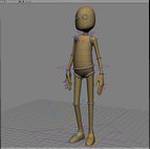I'd often read reports of performance issues in Soft as each new years release came around but I must admit I'd taken it to be the usual user community gripes where artists often forget that they're attempting more ambitious projects each year.
I also went into the exercise thinking that losing Tab search in the ICE and Render Tree's would be too painful for me to want to use 2014 permanently but I'm not finding that to be the case at all, as the pre-2015 interaction model has many of it's own advantages that keep interaction fluidity at an equivalent pace.
What started as an intellectual exercise will probably end up being a permanent move. I'll gradually repopulate my ICE toolkit, scripts and plugins but hopefully with a more critical eye in terms of what I really need!
I'm wondering if anybody else has found similar performance gains in particular Soft releases?

































































